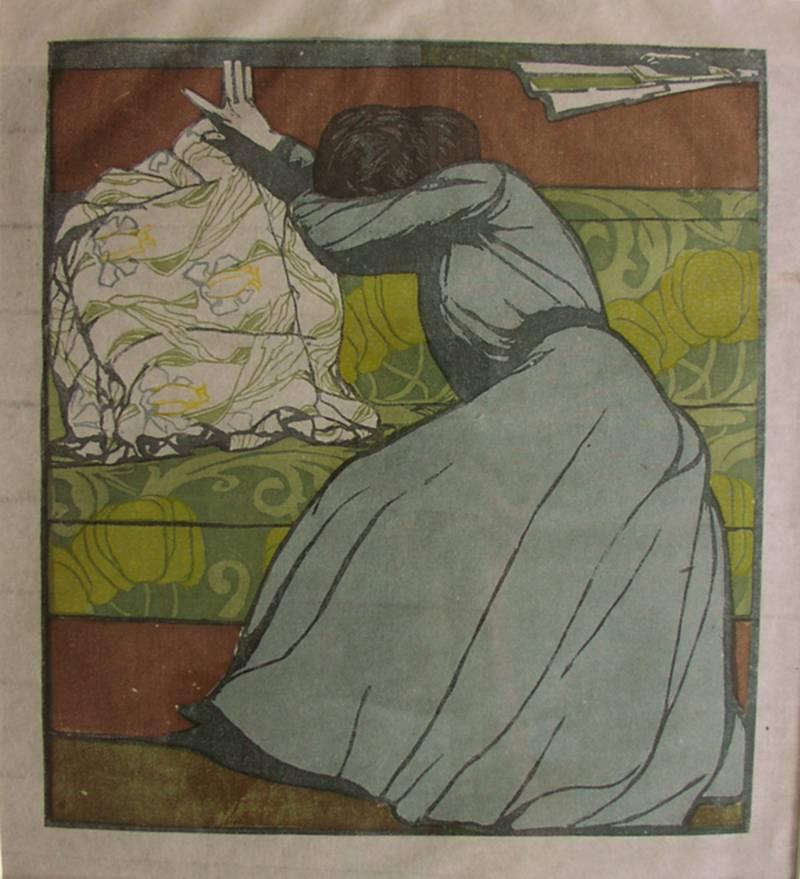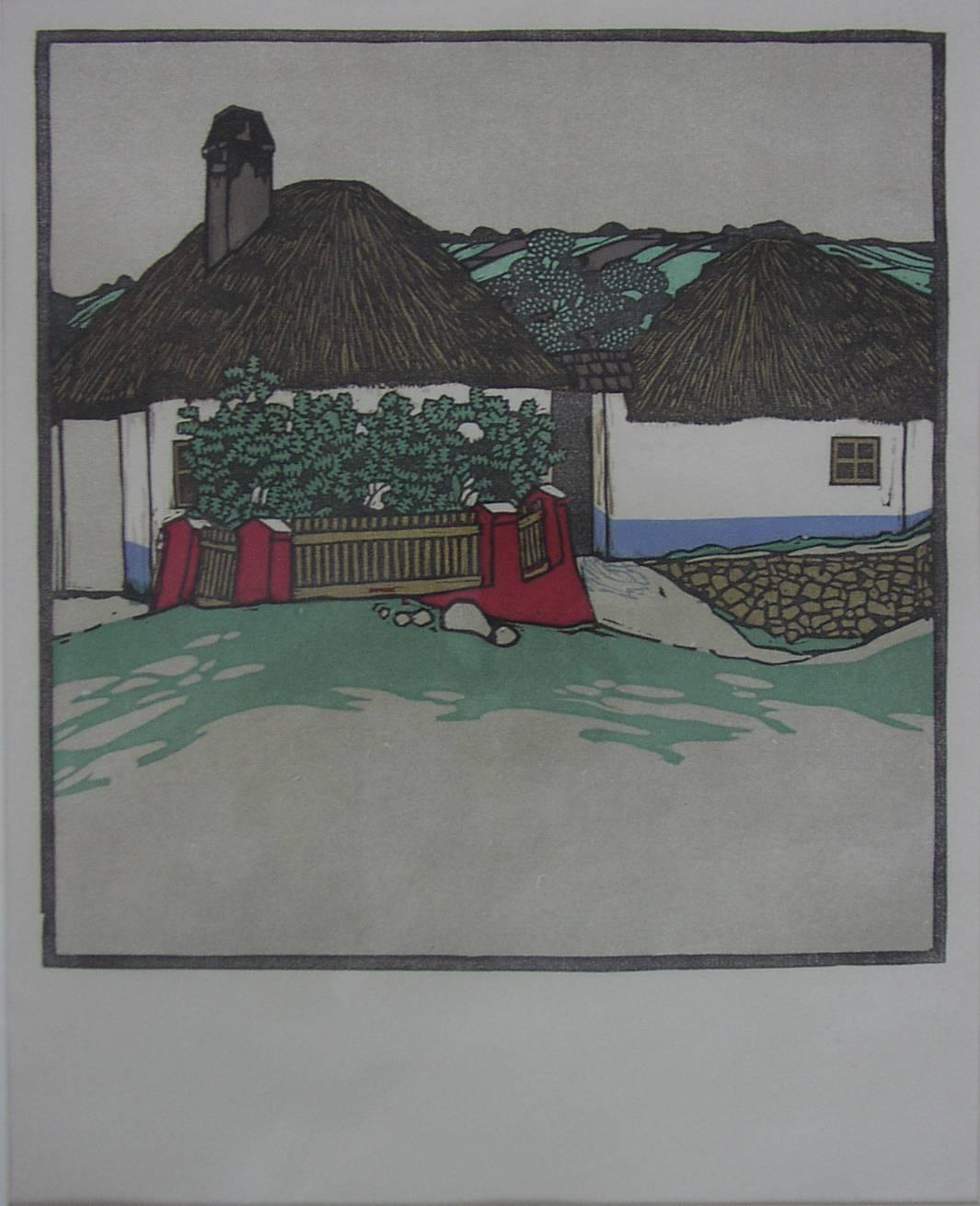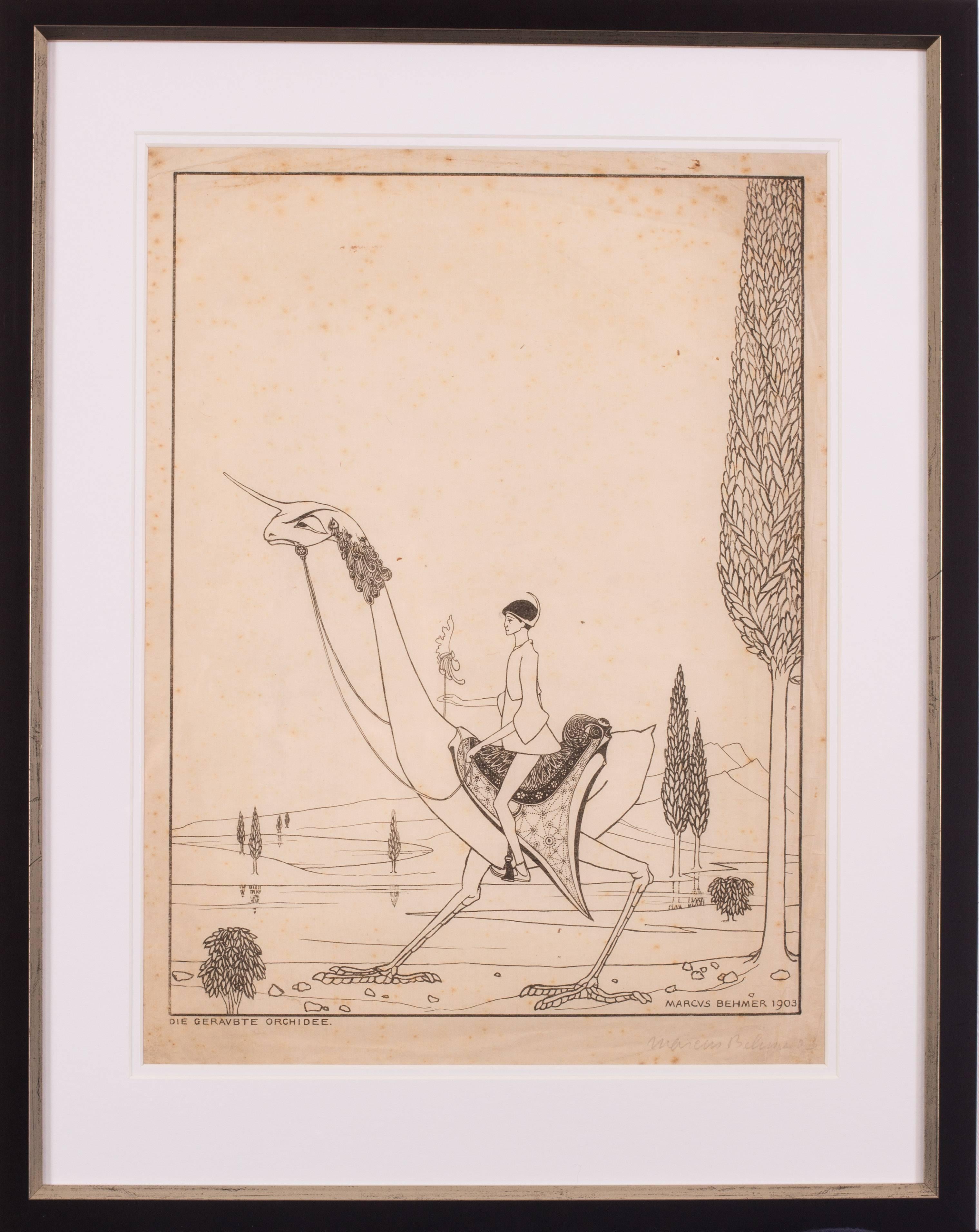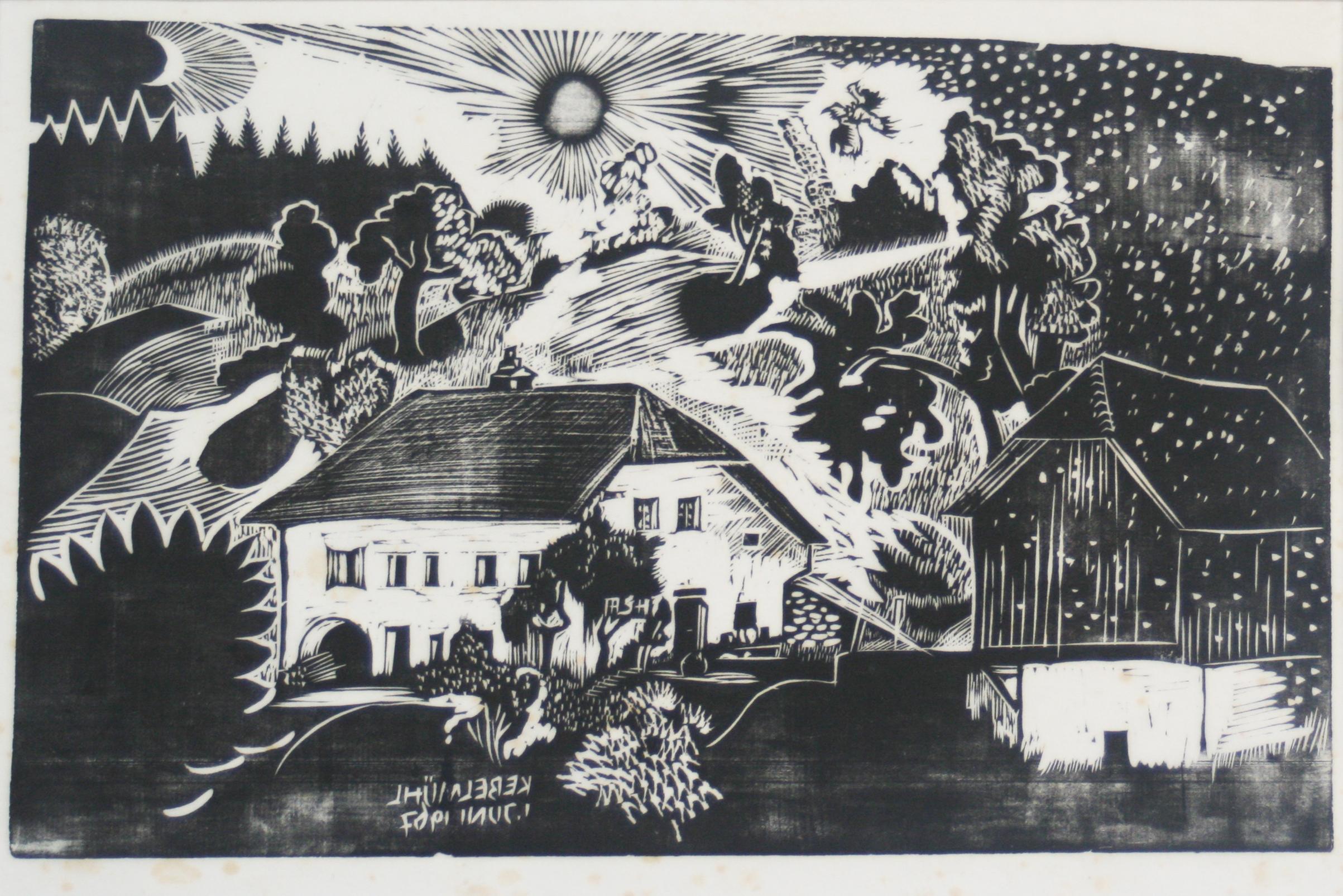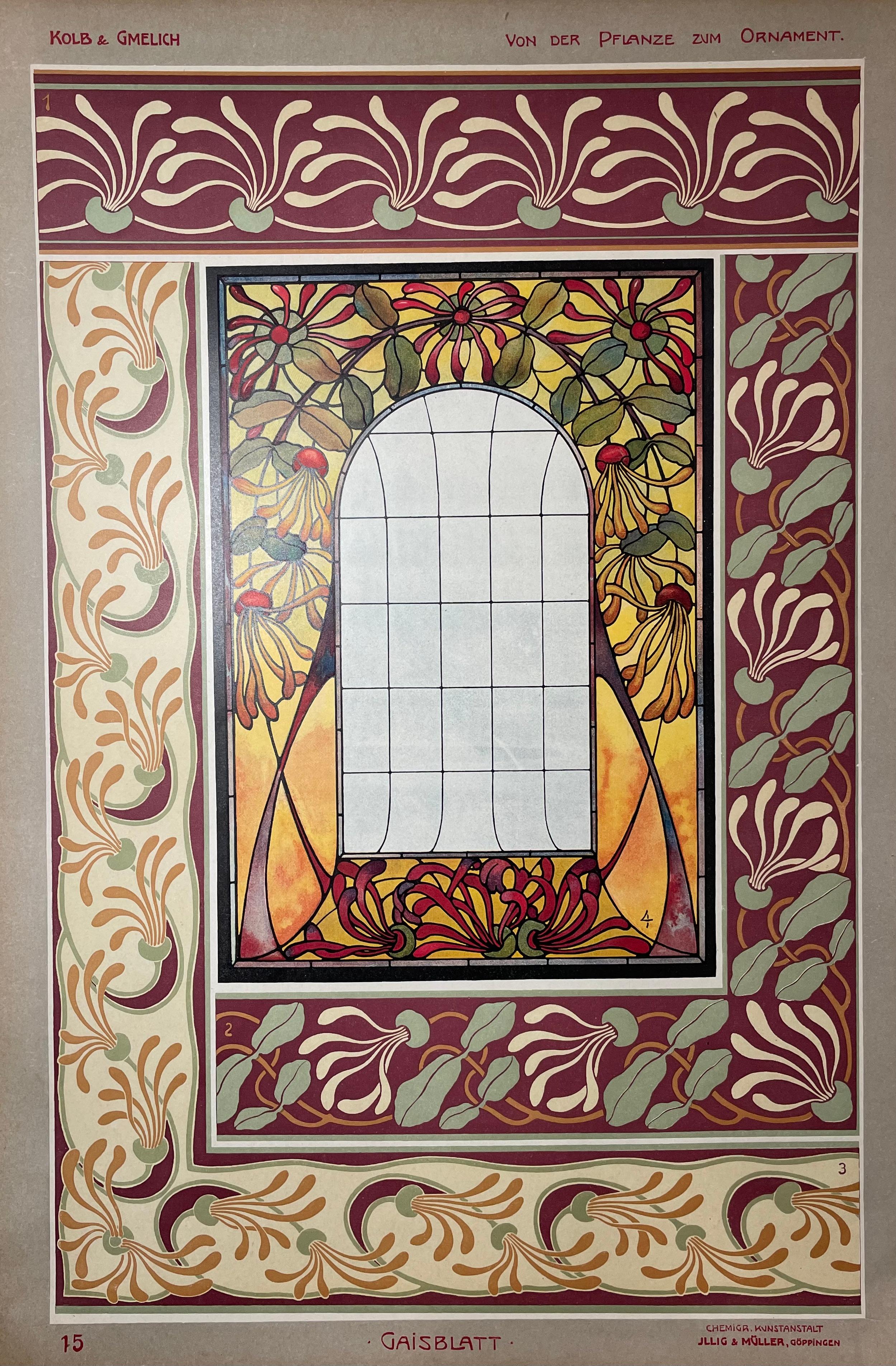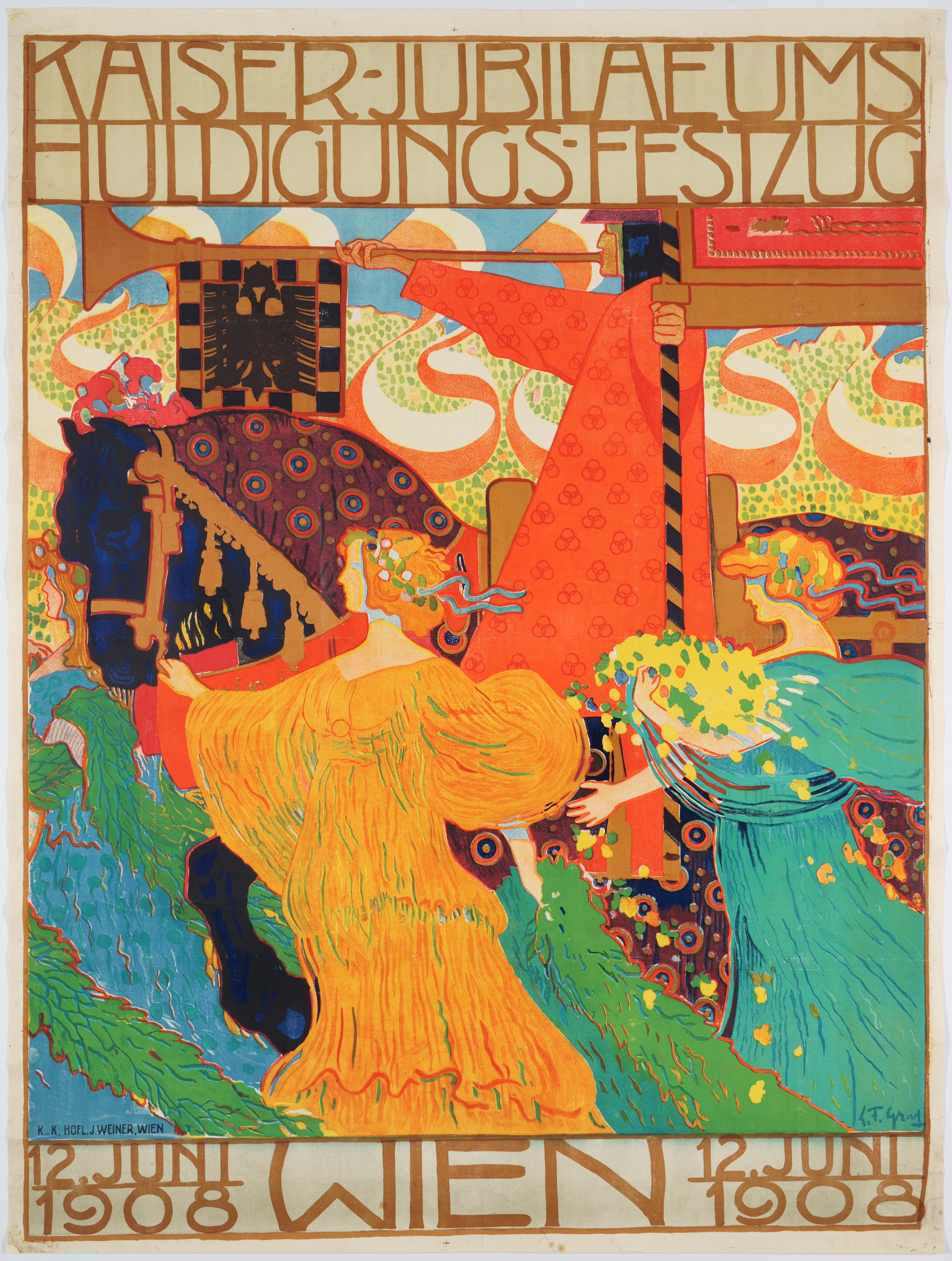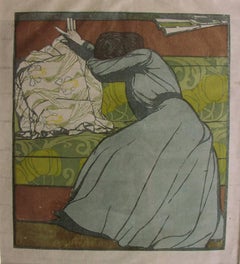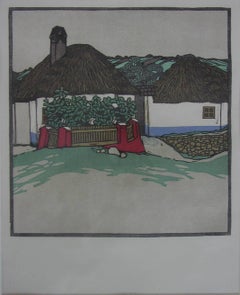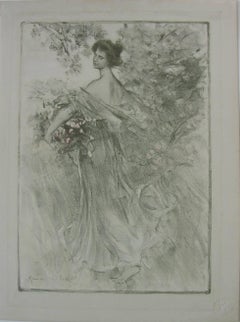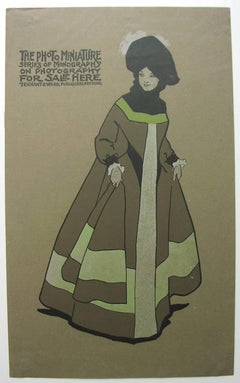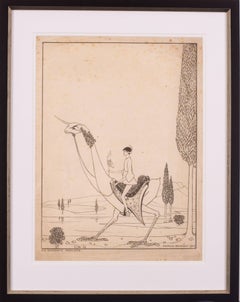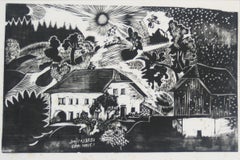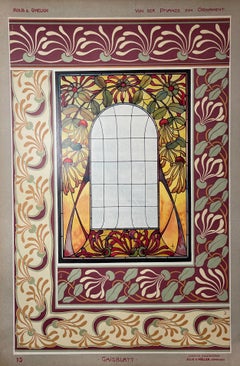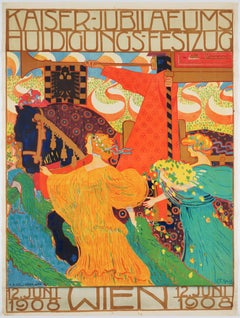Items Similar to Fruhling
Want more images or videos?
Request additional images or videos from the seller
1 of 5
Josef Siccard-RedlFruhling1910
1910
$800
£604.99
€692.98
CA$1,120.99
A$1,223.75
CHF 644.32
MX$14,659.06
NOK 8,240.59
SEK 7,523.79
DKK 5,176.74
About the Item
Siccard-Redl, Josef. Fruhling, Ca 1910. Color wood engraving, Signed and titled in pencil by the artist.
Little is known of this artist other than he worked in Vienna during the
Vienna Secession.
- Creator:Josef Siccard-Redl (1906 - 1938, Austrian)
- Creation Year:1910
- Dimensions:Height: 12.05 in (30.61 cm)Width: 10.075 in (25.6 cm)
- Medium:
- Movement & Style:
- Period:
- Condition:
- Gallery Location:New York, NY
- Reference Number:1stDibs: LU2922895973
About the Seller
5.0
Vetted Professional Seller
Every seller passes strict standards for authenticity and reliability
1stDibs seller since 2015
62 sales on 1stDibs
Associations
International Fine Print Dealers Association
- ShippingRetrieving quote...Shipping from: New York, NY
- Return Policy
More From This Seller
View AllDer Polster
By Max Kurzweil
Located in New York, NY
Kurzweil, Maximilian. Der Polster, 1903. Color woodcut on japon. Included as an insert in Pan. Unsigned. Framed.11 1/4 x 10 1/4. 1
Ref: Hofstatter, p. 241; Pabst, p. 154.
Maximillian Kurzweil was the co-founder of the Vienna Secession in 1897 and editor and illustrator of the influential Secessionist magazine Ver Sacrum...
Category
Early 1900s Vienna Secession Figurative Prints
Materials
Lithograph
Slowakisches Bauernhaus,
By Karl Schwetz
Located in New York, NY
Schweiz, Karl. Slowakisches Bauernhaus, Ca 1911. Color linoleum cut.
Framed.
Provenance: Galerie Michael Pabst, Munich.
Noted artist, painter, illustr...
Category
1910s Vienna Secession Landscape Prints
Materials
Linocut
Printemps (The Spring)
By Maurice Eliot
Located in New York, NY
ELIOT, Maurice (1864-1945). Printemps. September 1897. British Artist. Color lithograph.
Color Lithograph from L'Estampe Modern. 1897-1898. Each print shows the blindstamp imprint o...
Category
1880s Art Nouveau Figurative Prints
Materials
Lithograph
The Photo Miniature series of Monographs on Photography For sale here.
Located in New York, NY
Anonymous. The Photo Miniature series of Monographs on Photography For sale here.
Tennant. Ca 1898. Color lithograph. 20 ¼ x 12 ½ inches.
Lovely Turn of the Century poster...
Category
Late 19th Century Art Nouveau Figurative Prints
Materials
Lithograph
Waschemagazine Metzger
By Charles Loupot
Located in New York, NY
Loupot, Charles. Waschemagazine, Munsterberg 2/Metzger/B. Brunnen Freistrasse/Herrenhemden-Kragen Damenwasche & Aussteuern. 1922. Color lithograph. On linen.Good condition with the e...
Category
1920s Art Deco Figurative Prints
Materials
Lithograph
Color Aquatint
By Victor Mignot
Located in New York, NY
Ca. 1900. Original color aquatint. Very fine impression on cream laid Arches paper, signed in pencil lower right and numbered. No. 16 of 30 impressions. Full Margins. 17 1/2 x 12" Im...
Category
Early 1900s Art Nouveau Figurative Prints
Materials
Aquatint
You May Also Like
Original early 20th Century German signed lithograph by Marcus Behmer
By Marcus Behmer
Located in Petworth, West Sussex
Marcus Behmer (German, 1879 – 1958)
Die Geravbte orchidee (The robbed orchid), 1903
Signed ‘Marcus Behmer’ (lower right in pencil)
Lithograph on paper
16.1/8 x 12in. (40.8 x 30.5cm.)
It is apparent Behmer is influenced by the work of Aubrey Beardsley, though this work is no less beautiful in its execution. Little is known regarding his connections to Oscar Wilde though he is obviously an admirer and has many similarities with his private life and incarceration in prison. These works were a personal gift to Baron Detlev von Hadeln, the aristocrat and prominent art historian of the age.
Behmer is known to be, since 1903, a member in the first ever homosexual organization in Berlin and was thus probably a part of Adolf Brand’s circle, and may have contributed to Brand’s publication Der Eigene. Until now, few know that Behmer was sentenced in April 1937 by a court in Konstanz to imprisonment for two years, being arrested in Freiburg and at other locations in southern Germany for being a homosexual. At times he was given the opportunity to work as an artist in prison. The works produced in this period are mostly calligraphic designed tablets with Greek text (prayers and Bible quotes...
Category
Early 20th Century Art Nouveau More Prints
Materials
Lithograph
Gehöft am Hügel (Kebelmühl)
Located in Wien, 9
Auguste Kronheim was born in Amsterdam in 1937. The artist makes woodcuts and drawings. She received her training in drawing from Hanns Kobinger and graduated from the Linz Federal T...
Category
1960s Modern Abstract Prints
Materials
Woodcut
Von Der Pflanze Zum Ornament
Located in Wilton, CT
30 plates of floral designs from the Jugendstil period
Category
Early 1900s Jugendstil Interior Prints
Materials
Lithograph
$2,000 Sale Price
20% Off
Original Vintage Secession Poster celebrating the emperor's jubilee
Located in Zurich, CH
Original Vintage Poster by the Austrian artist Ferdinand Ludwig Graf, a member of the Hagenbund. This Viennese artist association moved as soon a...
Category
Early 1900s Vienna Secession Figurative Prints
Materials
Paper
Poster for the 15th Exhibition of the Vienna Secession by Adolf Michael Bohm
By Adolf Boehm
Located in Palm Beach, FL
Note: Due to the size, weight, and value of this piece, we require shipping through 1stDibs, for its cost effectiveness, full insurance coverage, and reliable handling. While standar...
Category
Early 1900s Vienna Secession More Prints
Materials
Lithograph
Vienna, Schoenbrunn Castle
By Josef Eidenberger
Located in San Francisco, CA
This artwork titled "Vienna, Schoenbrun Castle" c.1960 is a color etching by noted Austrian artist Josef Eidenberger, 1899-1991. It is hand signed n pencil by the artist, inscribed "...
Category
Mid-20th Century Realist Figurative Prints
Materials
Etching
More Ways To Browse
Small Dog Painting
Tyrol Poster
Used Water Slides
Vintage Caribbean Travel Posters
Vintage Harley Prints
Vintage Nuclear Posters
Vintage Posters Amsterdam
Vintage Posters Portugal
Vintage School Bag
Vintage Wanted Posters
Warhol Leo Castelli
Wellington Oil
William Carter
1930s Cubist Painting
Aero Art
African Safari Art
Agam Menorah
Air Afrique Vintage Poster
